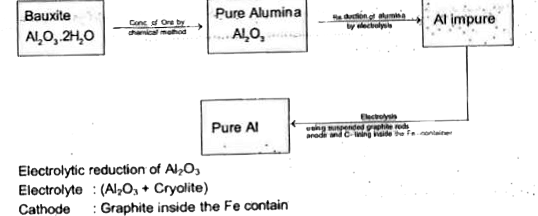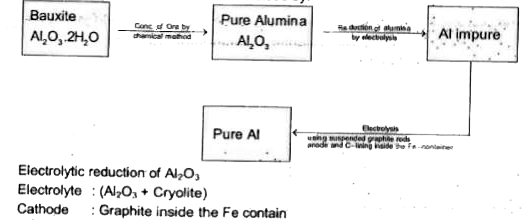What is understood by 'hydrogen gap'?
Step-by-Step Solution:
1. Understanding the Concept of Hydrogen Gap:
- The hydrogen gap refers to a specific phenomenon in the periodic table related to the formation of hydrides. Hydrides are compounds formed when hydrogen combines with other elements.
2. Hydrides Formation:
- Hydrogen can combine with less electronegative elements to form various types of hydrides. Examples include:
- Water (H₂O)
- Diborane (B₂H₆)
- Sodium hydride (NaH)
3. Periodic Table Analysis:
- When examining the periodic table, we notice that most elements can form hydrides. However, certain groups do not participate in this formation.
4. Identifying the Hydrogen Gap:
- The hydrogen gap specifically includes:
- Group 7 (Halogens)
- Group 8 (Noble gases)
- Group 9 (Transition metals)
- These groups do not form hydrides, which creates a "gap" in the expected trend of hydride formation across the periodic table.
5. Conclusion:
- Therefore, the hydrogen gap is defined as the absence of hydride formation in groups 7, 8, and 9 of the periodic table, despite the presence of hydrogen and other elements that typically form hydrides.
- The hydrogen gap refers to a specific phenomenon in the periodic table related to the formation of hydrides. Hydrides are compounds formed when hydrogen combines with other elements.
- Hydrogen can combine with less electronegative elements to form various types of hydrides. Examples include:
- Water (H₂O)
- Diborane (B₂H₆)
- Sodium hydride (NaH)
- When examining the periodic table, we notice that most elements can form hydrides. However, certain groups do not participate in this formation.
- The hydrogen gap specifically includes:
- Group 7 (Halogens)
- Group 8 (Noble gases)
- Group 9 (Transition metals)
- These groups do not form hydrides, which creates a "gap" in the expected trend of hydride formation across the periodic table.
- Therefore, the hydrogen gap is defined as the absence of hydride formation in groups 7, 8, and 9 of the periodic table, despite the presence of hydrogen and other elements that typically form hydrides.
Topper's Solved these Questions
- HYDROGEN, WATER AND HYDROGEN PEROXIDEBOOK - CENGAGE CHEMISTRY ENGLISHCHAPTER - HYDROGEN, WATER AND HYDROGEN PEROXIDEEXERCISE - Exercises (Linked Comprehension )
20 Videos
- HYDROGEN, WATER AND HYDROGEN PEROXIDEBOOK - CENGAGE CHEMISTRY ENGLISHCHAPTER - HYDROGEN, WATER AND HYDROGEN PEROXIDEEXERCISE - Exercises Multiple Correct
19 Videos
- HYDROGEN, WATER AND HYDROGEN PEROXIDEBOOK - CENGAGE CHEMISTRY ENGLISHCHAPTER - HYDROGEN, WATER AND HYDROGEN PEROXIDEEXERCISE - Ex 3.1
4 Videos
- GENERAL ORGANIC CHEMISTRYBOOK - CENGAGE CHEMISTRY ENGLISHCHAPTER - GENERAL ORGANIC CHEMISTRYEXERCISE - Analytical and Descriptive
1 Videos
- IONIC EQUILIBRIUMBOOK - CENGAGE CHEMISTRY ENGLISHCHAPTER - IONIC EQUILIBRIUMEXERCISE - Archives Subjective
28 Videos
Similar Questions
Knowledge Check
Define ionisation energy. What is the value for a hydrogen atom?
A3.4eVB10.4eVC12.09eVD13.6eV
What is meant by hydrogen economy?
View SolutionWhat is understood by lateral displacement? State two factors on which it depends.
View SolutionDefine ionisation energy. What is the value for a hydrogen atom?
View SolutionExtraction of aluminum can be understood by

What is wrong if anode is made of nickel instead of graphite ?
View SolutionExtraction of aluminum can be understood by

The purpose of adding cryolite is :
View SolutionWhat is the source of carbon, hydrogen and oxygen in plants?
View SolutionExtraction of aluminum can be understood by

The function of fluorspar (CaF2) is :
View Solution
